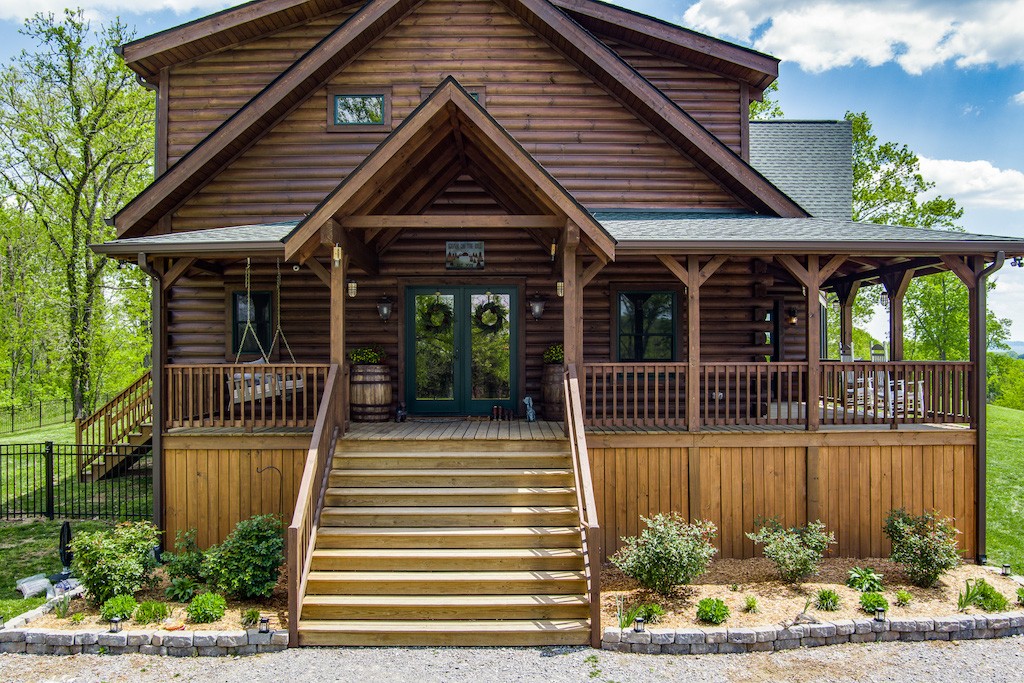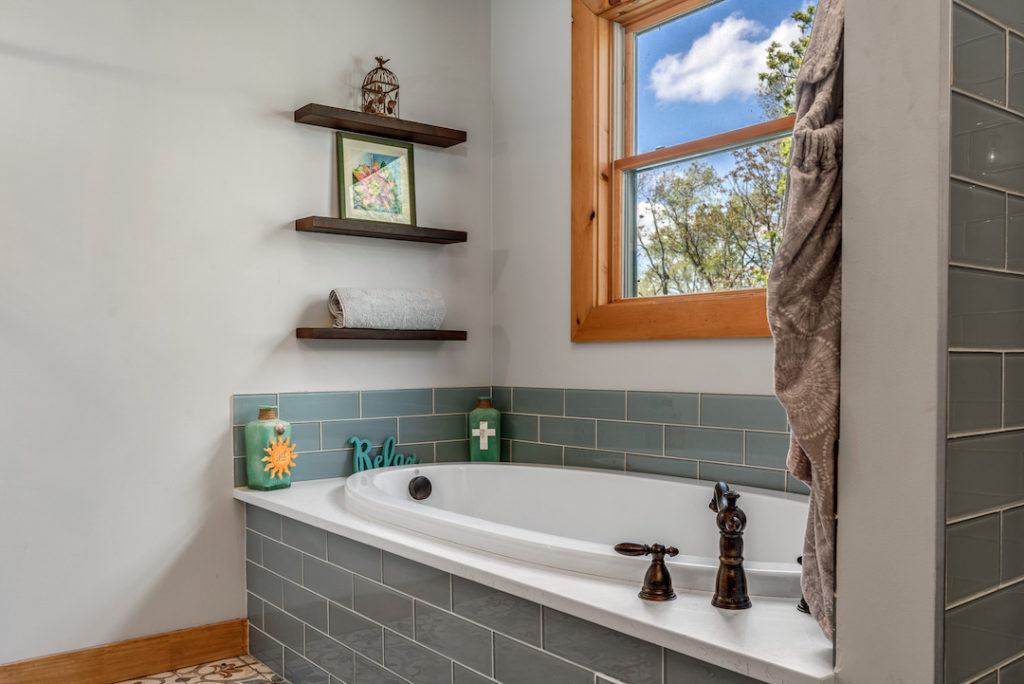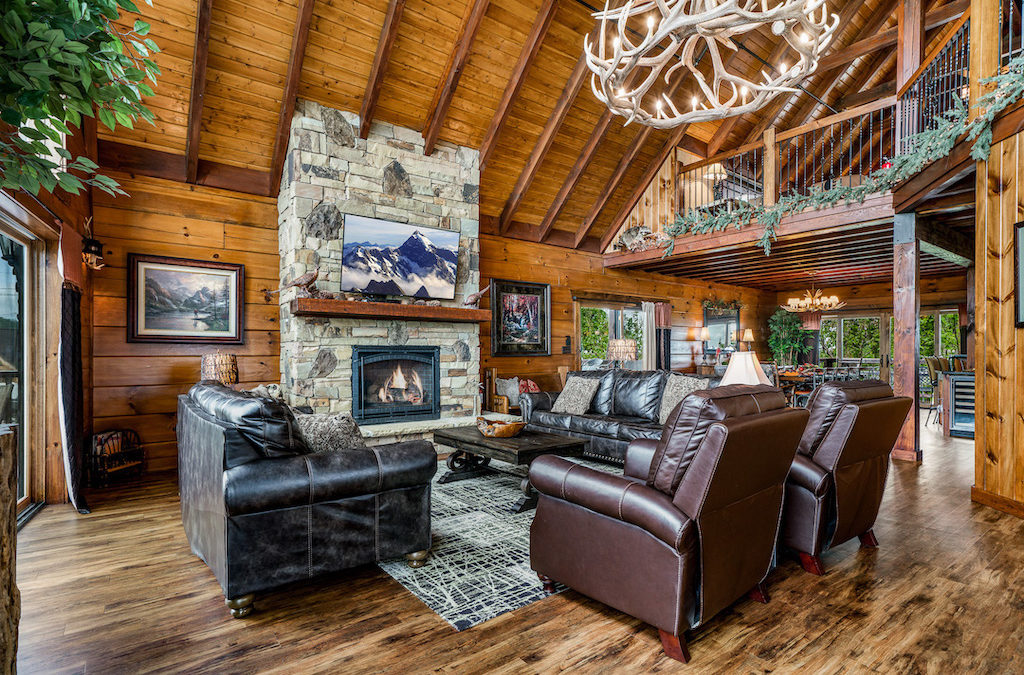Despite all of the innovations made in the realm of building materials, homeowners are inexorably drawn to the rustic charm of natural wood. However, despite its breathtaking appearance, some may have concerns about how to keep log or timber homes warm during the colder months of the year. While timber itself does have some insulative properties, it will likely not be enough when left without some assistance. Therefore, the following breakdown looks at several innovative ways to keep a log, timber or hybrid home as warm as possible.
Ceiling Insulation
In most homes, homeowners are able to blow insulation into the attic areas above rooms. However, when it comes to log or timber frame homes, many homeowners choose vaulted ceilings (like the one shown above) with exposed beams under a heavy-timber roof system. In some cases, homeowners choose a traditional roof system. Traditional roof systems do require insulation. Some homeowners choose a heavy timber system for the great room and use traditional roofing systems for the remainder of the home
Below Grade Insulation

When most people think of insulation, they typically think of in-wall insulation, the type that comes in fiberglass batts or is simply blown into the framing before drywall is added. However, log homes usually do not require any type of wall insulation, as the logs themselves are stacked upon each other without the need for a separate framing system, acting as both the structure and insulation. Hybrid homes may use a traditional framing system, with log-like cladding added to the exterior to give the appearance of natural logs, in which case traditional in-wall insulation should be added, but log homes, in the strictest sense, will not lend themselves to wall insulation.
However, this does not mean that those with timber homes must forego insulation. Up to 20% of a home’s total heat loss can occur at the perimeter and slab of the home’s foundation, indicating that below grade insulation is a vital component of keeping a home warm during the winter months. This rigid type of insulation comes in a wide range of R-values and has high compressive strength, making it well suited to withstand the heavy loads beneath the floors of a timber home.
Radiant Floor Heating
To build on the idea of keeping the home warm from below, consider the benefits of a radiant floor heating system for a log, timber or hybrid home. Radiant floor heating works in the same way as any other type of electric heating system, such as a radiator, portable space heater or baseboard heater but with one distinct advantage – the entire floor is heated and not just one specific area.
In a radiant floor heating system, heat wires run directly below the finished flooring material and transfer heat to the floor above. Instead of just heating the air and circulating it through the room, like an HVAC system, radiant floor heating transfers heat to the people and objects in the room. By evenly distributing heat in a stove-like manner, radiant floor heating creates fewer hot or cold pockets than other heating methods, making the home more comfortable to be in.
Add Window and Door Trim

Due to a physical principle known as the stack effect, in which warm, indoor air is buoyed and pressed out of a building in exchange for colder exterior air, warm air inside a home can exit through any available crack. Therefore, it is important to keep the home sealed as tight as possible
While Honest Abe’s building system eliminates any gaps between the stacked logs, it is also important to take a look at the windows and doors. Warm air can easily escape through small cracks in the window or door framing. To help alleviate these concerns, standard window and door trim is provided in all Honest Abe log and timber home packages. Not only can trim help make these orifices more airtight but they can provide an attractive appearance that meshes well with the natural timber ambiance.
The Best Ways to Keep a Wood Home Warm
The rustic charm of log cabins and timber frame homes is here to stay, regardless of how far synthetic building materials advance. However, despite the aesthetic beauty, it can be a bit challenging to keep any home warm in the winter. By employing below grade insulation, radiant floor heating, blown in or even polyiso ceiling insulation and secure window and door trim, homeowners can keep their timber homes toasty and comfortable at all times of the year.
Natalie Akins is an editor for the Innovative Building Materials blog and a content writer for the building materials industry. She is focused on helping fellow homeowners, contractors and architects discover materials and methods of construction that save money, improve energy efficiency, and increase property value.




